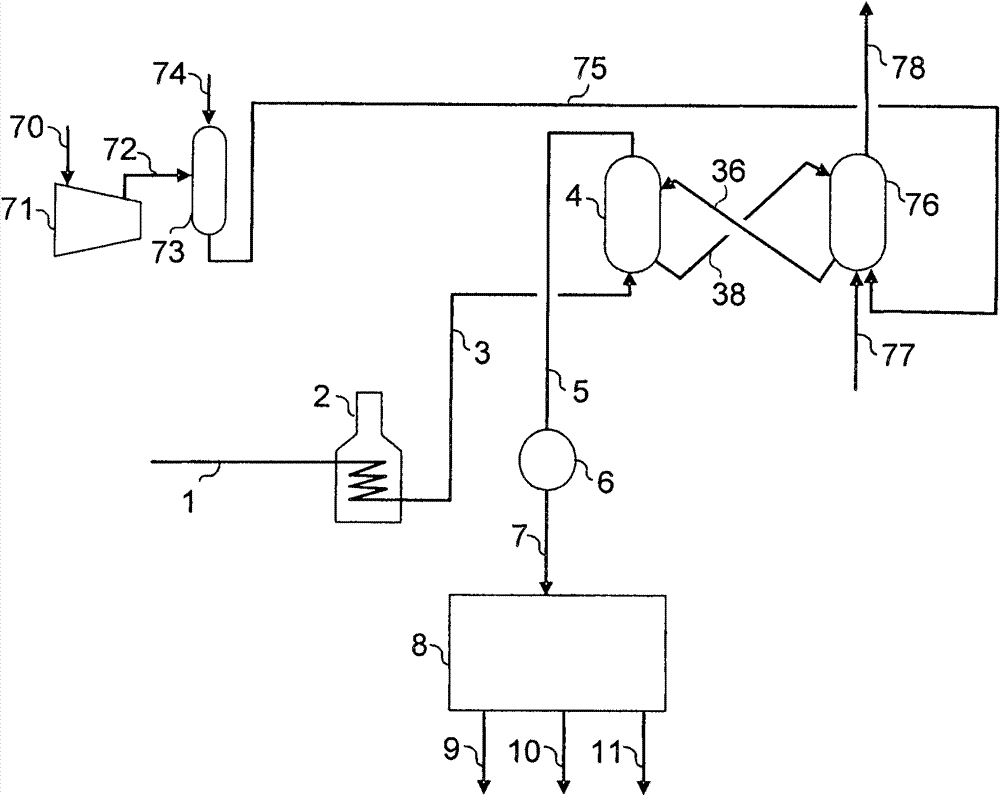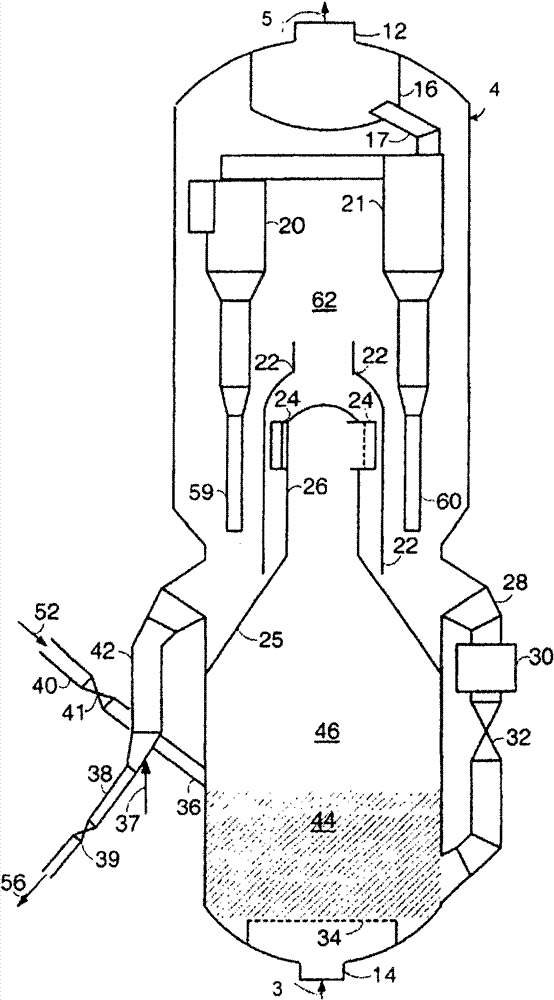Fluidized bed reactor with back-mixing for dehydrogenation of light paraffins
A fluidized bed reactor and fluidized bed technology are applied in the fields of organic chemistry, dehydrogenation of hydrocarbons, hydrocarbons, etc., and can solve the problems of complex product stream separation and other problems.
- Summary
- Abstract
- Description
- Claims
- Application Information
AI Technical Summary
Problems solved by technology
Method used
Image
Examples
Embodiment
[0020] A comparison of the present invention with a conventional moving bed reactor system was performed using engineering simulations to illustrate the advantages of the present invention.
[0021] In the base case of the prior art process, a mixture of hydrogen and propane is fed to a system of four adiabatic reactors with intermediate heaters between each reactor. The temperature at the inlet of each reactor was 655°C. The pressure at the outlet of the last reactor was 170 kPa (10 psig). The process achieved a conversion of propane of 40% with a selectivity to propane of 84 mole % (moles of propylene formed per mole of propane reacted). In the process of the present invention, a mixture of hydrogen and propane is fed to a single-stage back-mixed reactor with an inlet temperature of 632°C and an outlet pressure of 170 kPa (10 psig). The process achieved a conversion of propane of 40% with a selectivity to propylene of 96 mole%.
[0022] In summary, the present invention i...
PUM
| Property | Measurement | Unit |
|---|---|---|
| particle size | aaaaa | aaaaa |
Abstract
Description
Claims
Application Information
 Login to View More
Login to View More - R&D
- Intellectual Property
- Life Sciences
- Materials
- Tech Scout
- Unparalleled Data Quality
- Higher Quality Content
- 60% Fewer Hallucinations
Browse by: Latest US Patents, China's latest patents, Technical Efficacy Thesaurus, Application Domain, Technology Topic, Popular Technical Reports.
© 2025 PatSnap. All rights reserved.Legal|Privacy policy|Modern Slavery Act Transparency Statement|Sitemap|About US| Contact US: help@patsnap.com


